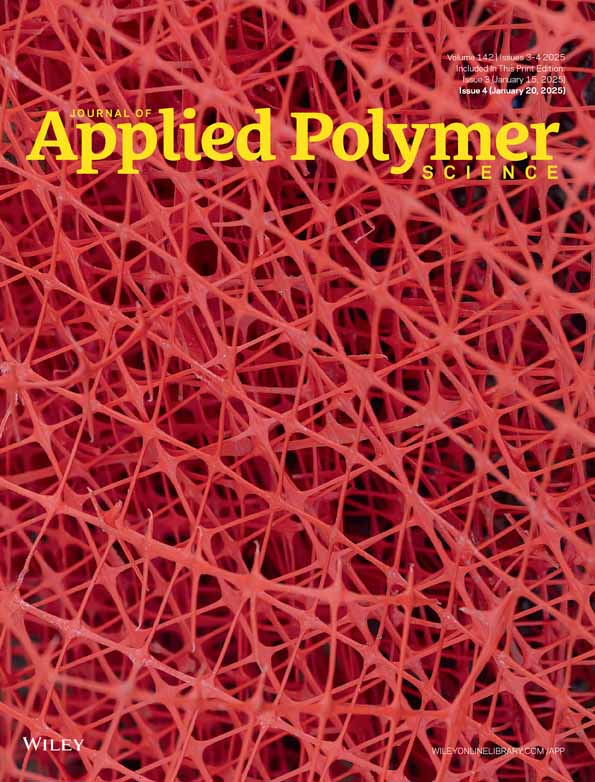A P,N flame retardant containing flexible chain segments, imparting excellent toughness and flame retardancy to epoxy resins
Abstract
In order to enhance the flame retardancy of epoxy resin (EP) without affecting its mechanical properties, a phosphorus-nitrogen synergistic flame retardant (MPCD) was synthesized in this paper by using melamine, paraformaldehyde, 9,10-dihydro-9-oxa-10-phospha-phenanthrene-10-oxide (DOPO) and cashew phenol as the raw materials, which was applied to the Ep in order to improve its flame retardancy and toughness. Experiments have shown that only 5% content of MPCD added into the EPs could achieve a significant LOI of 35.8% and successfully obtained a V-0 rating in UL-94 testing. In contrast, the PHRR with 5% additional MPCD was 456.4 kW/m2 and the THR was 80.2 MJ/m2, which were 52.6% and 29.4% lower than that of pure EPs, respectively. The PHRR of pure EPs was 963.1 kW/m2 and THR was 113.6 MJ/m2, which indicated that the addition of MPCD improved the EP system's flame retardant performance. The impact strength of pure EPs was 13.5 KJ/m2, and 5% addition of MPCD resulted in a 99% increase in the impact strength of EP/MPCD cured samples up to 26.9 KJ/m2, which was explained by the cashew phenol moiety's flexible chain segments. Furthermore, it is discovered by researching its flame-retardant mechanism that the addition of MPCD may significantly improve the carbon layer's capacity to form char and maintain thermal stability. It can also efficiently trap free radicals and dilute the combustible gases produced during combustion. The flame retardant can increase the overall safety of the EP system by acting as a biphasic flame retardant in both the gas and the solidified phases at the same time.
Open Research
DATA AVAILABILITY STATEMENT
The data that support the findings of this study are available from the corresponding author upon reasonable request.




